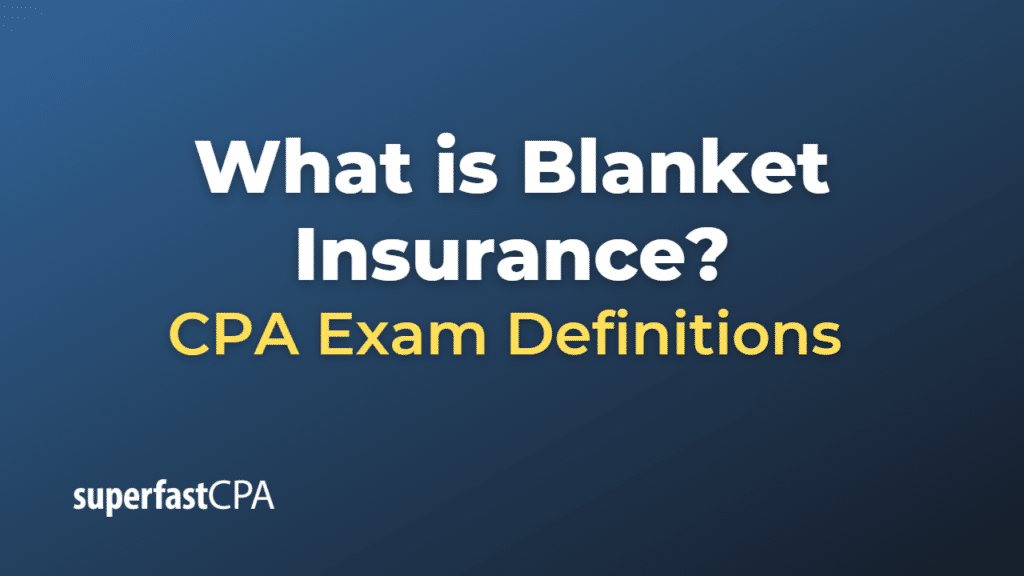Blanket Insurance
Blanket insurance is a type of insurance policy that provides coverage for multiple items or properties under a single policy, rather than requiring separate policies for each individual item or property. This type of insurance is often used by businesses, homeowners, or landlords who have multiple assets that need coverage and prefer the convenience and simplicity of a single policy.
Blanket insurance typically offers a single coverage limit that applies to all the items or properties included in the policy. This means that the total coverage limit can be used to cover any combination of the insured items or properties, providing more flexibility than individual policies with separate coverage limits for each item or property.
Some common examples of blanket insurance include:
- Commercial property insurance: Businesses may purchase blanket insurance to cover multiple locations, such as offices, warehouses, or retail stores, under a single policy. This can simplify insurance management and provide more flexibility in the event of a claim.
- Homeowners insurance: Homeowners may purchase blanket insurance to cover their primary residence along with additional properties, such as vacation homes or rental properties, under a single policy.
- Personal property insurance: Blanket insurance can also be used to cover multiple personal items, such as jewelry, artwork, or collectibles. Instead of insuring each item individually, blanket insurance provides coverage for the combined value of all the items.
- Builders risk insurance: Construction companies or property developers may purchase blanket insurance to cover multiple construction projects simultaneously, providing coverage for the various risks associated with each project.
The main advantage of blanket insurance is its simplicity and flexibility. Policyholders can manage their insurance coverage more efficiently and have the flexibility to allocate coverage as needed in the event of a claim. However, it’s essential to ensure that the blanket coverage limit is sufficient to cover the total value of all the insured items or properties, as inadequate coverage may result in financial losses in the event of a claim.
Example of Blanket Insurance
Let’s consider a hypothetical example of a business owner, John, who owns a chain of boutique clothing stores in multiple locations.
John owns five stores, each located in different shopping centers. Each store has its inventory, equipment, and furniture. To protect his business investment, John decides to purchase commercial property insurance. Instead of buying separate insurance policies for each store, John opts for a blanket insurance policy that covers all five store locations.
John’s blanket insurance policy has a coverage limit of $1,000,000. This single coverage limit can be used to cover any combination of the insured stores in case of damages or losses. For instance, if a fire occurs at one of the stores, causing $300,000 in damages, the blanket policy would cover the loss. If another store suffers a theft resulting in a $50,000 loss, the same policy would cover this as well.
In this example, John benefits from the convenience and flexibility offered by the blanket insurance policy. He can manage his insurance coverage more efficiently with a single policy, and he has the flexibility to allocate coverage as needed in the event of a claim across the different store locations. It’s essential, however, that John ensures the blanket coverage limit of $1,000,000 is sufficient to cover the total value of all his stores, inventory, and equipment to avoid any financial losses if multiple claims occur simultaneously or if the total value of his properties increases over time.













